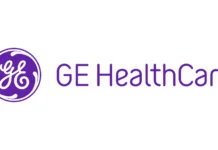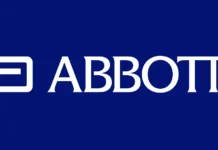The American Hospital Association had four areas of comment when it came to the Centers for Medicare & Medicaid Services as well as the Office of the National Coordinator for Health Information Technology on the federal rule that was proposed so as to establish disincentives for providers who have gone on to commit information blocking under the 21st Century Cures Act.
The reason it matters
As per the AHA’s comments in a letter recently, it looks like CMS and ONC went on to underestimate the real financial effect of a 75% dip in yearly market basket updates when it comes to inpatient prospective payment system hospitals and a one percentage point decrease in reimbursement in the case of critical access hospitals.
As the letter goes on to break down the organization’s comments within the draft, it starts to explain its alarm at the probable financial fallout by beginning with the guiding 2016-era healthcare legislation itself.
The CURES Act, as per the AHA, does not really compel the Department of Health and Human Services to put forth CMS as the apt agency and, by extension, Medicare reimbursement, like a vehicle when it comes to monetary disincentives.
The organization stated that, as per its calculations, the disincentive structure went on to be outlined in the proposed rule happens to be so excessive that it may go on to threaten the financial viability when it comes to economically fragile hospitals, such as many small as well as rural hospitals.
It is well to be noted that the member hospitals tested the expected median disincentive amount of $394,353 and range of $30,406 to $2,430,766 throughout the eligible hospitals, which CMS as well as ONC set, and said its effects would be far greater.
According to AHA’s usage of the formula described in this particular scenario, numerous members estimated what their own penalties would be and found that the effect could go on to be more than three times the upper-level number as quoted in the range published within the rule and an average impact that is almost 10 times higher than the median quoted in the rule.
Instead of penalizing healthcare program reimbursements, the organization goes on to recommend making use of a table that happens to be already set and existing practices like referring enforcement of HIPAA violations to the Office of Civil Rights. The AHA states that there are already certain references to HIPAA.
Apart from this, AHA said the proposed rules for Office of the Inspector General processes that would go on to gauge if the information blocking has gone on to occur appear arbitrary and capricious. It is, however, unclear, including the appeals process.
The agency basing the disincentives on variable elements of provider payment would go on to create an unfair as well as confusing framework within which disproportionate punishment could go on to be levied for the same offense, thereby depending on the year of the offense and how long it would take for the violation to be referred to CMS.
Finally, AHA went to note that when finalized, the rules are going to be the program’s fourth update ever since 2019.
Because of a lot of regulations, the devil happens to be in the details. Information-blocking anticipations go on to need special attention from providers. Healthcare IT News went on to attend government and industry webinars, during which policy and data privacy experts went on to review a prominent level of details that providers must go through quickly so as to avoid penalties.
According to data privacy attorney with Foley & Lardner, Jennifer Hennessy, for those that have been used to living under HIPAA, which permitted certain specific disclosures but did not require them, in most cases, the data blocking rules will now require specific disclosures so as to decline to disclose information under the privacy exception.
The Medical Group Management Association as well as the National Association of ACOs are also asking for clarity from ONC and have made recommendations so as to ease the proposed disincentive burden for healthcare providers.
MGMA went on to suggest a corrective action process that would go on to provide a remedy to the allegations of information blocking sans the threat of financial penalties that dissuade offerors from Medicare participation, whereas NAACOS asked for edits to the rule cutting participation in the Medicare Shared Savings Program if in case the ACO or its clinicians happen to be noncompliant.
Properly enabling the providers to correct offending conduct by making use of education and guidance would best help information sharing, as stated by the MGMA in its letter.
Apparently, the AHA urges CMS as well as the ONC not to finalize this disincentive structure, as noted by the American Hospital Association in its letter when it comes to the proposed rule. Should it go on to move forward, they urge the agencies to verify their calculations and also be transparent when it comes to publishing the specific formula that is used so that stakeholders can very well gauge the discrepancy between their affected numbers and those from the agencies.


















